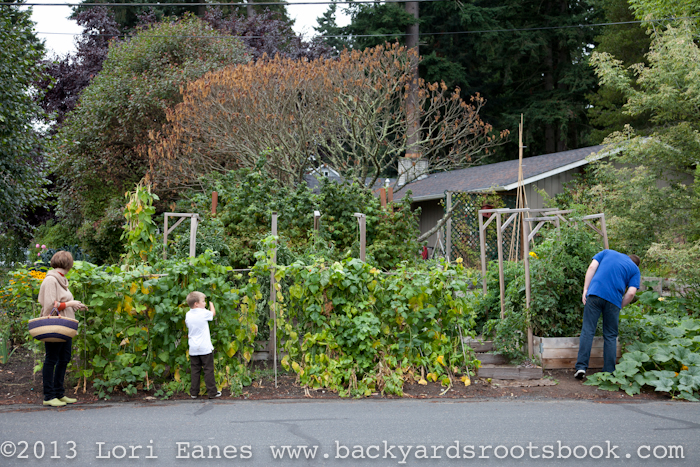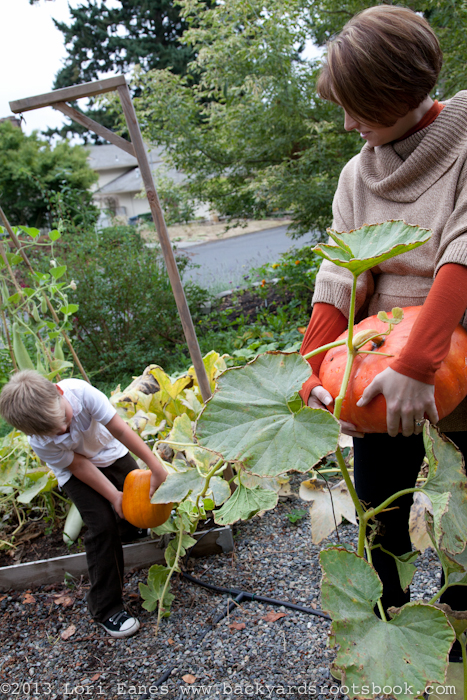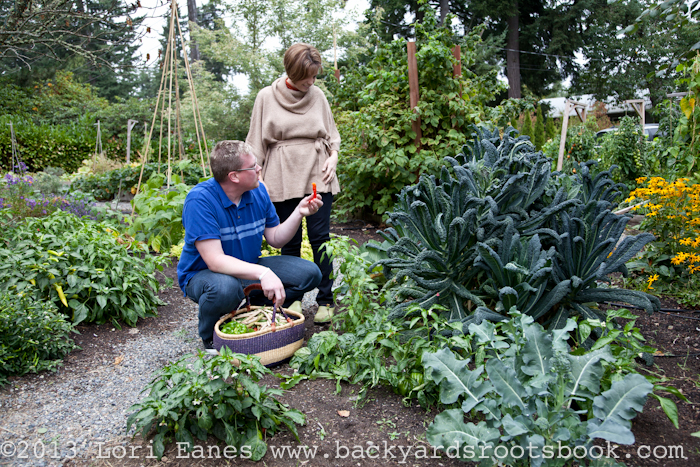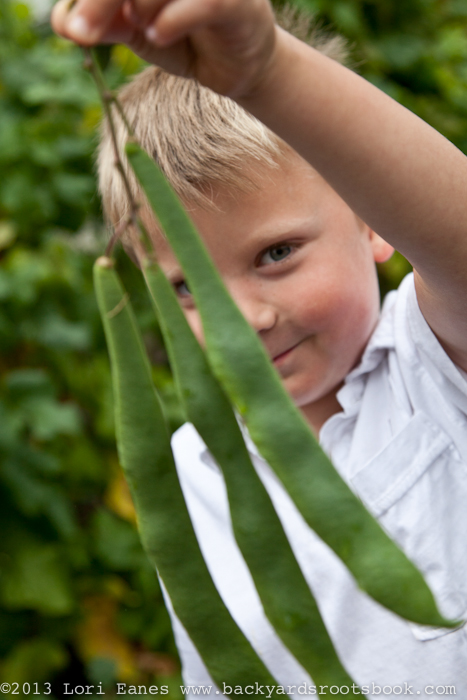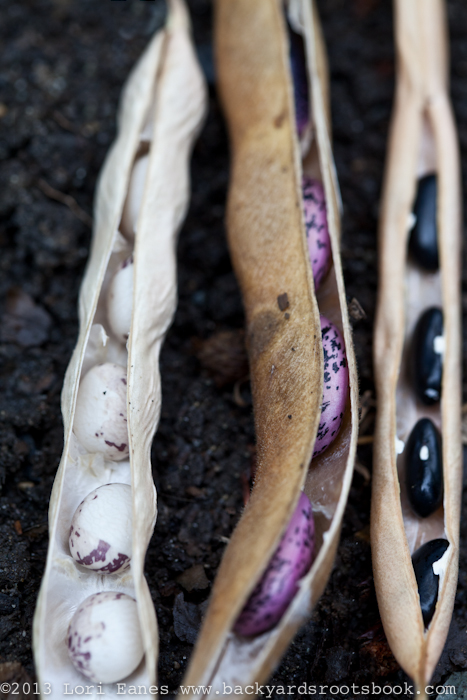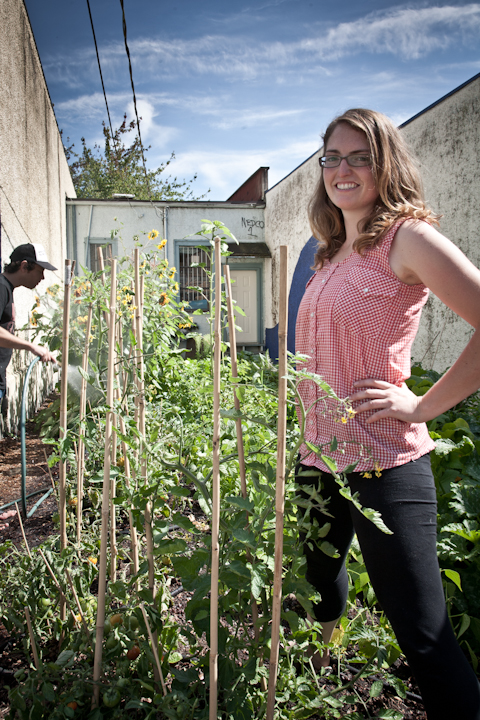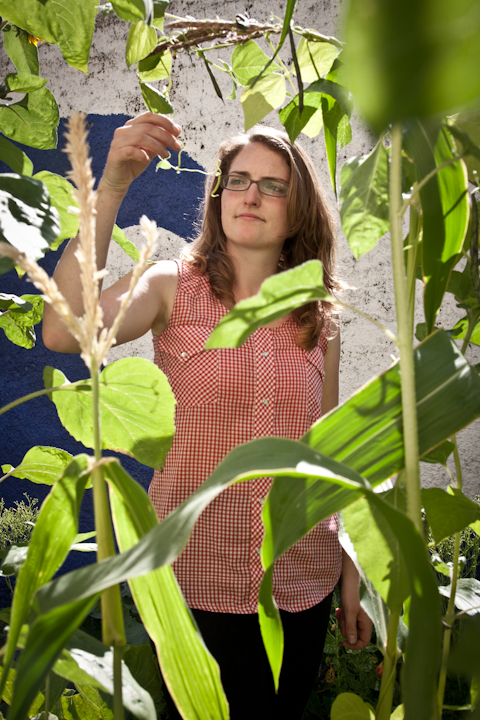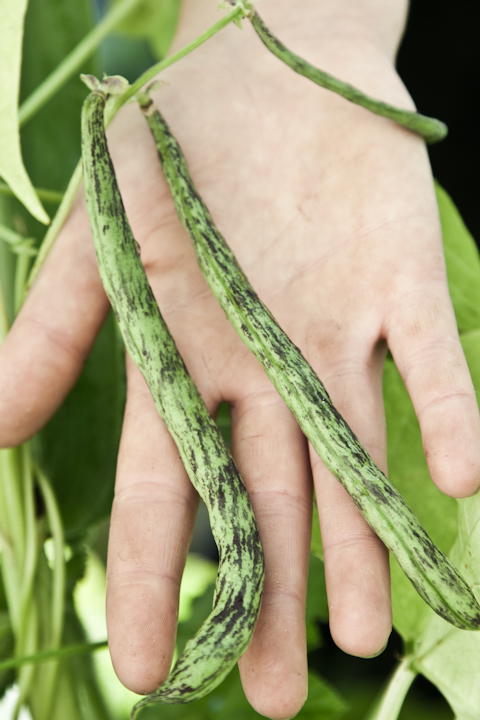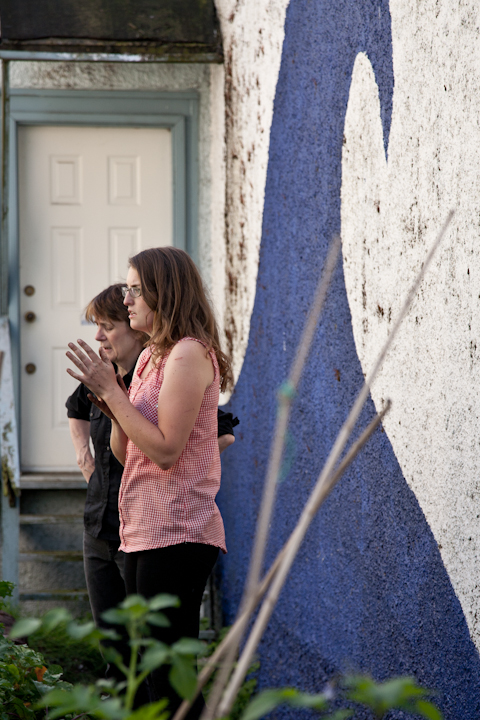My favorite thing about visiting Lisa’s giant garden was her attitude. “I like to grow food that I can store,” she told me. And when she says store, she means storing the easy way–without canning or freezing. She told me her most satisfying vegetable was potatoes. She plants five varieties and and by the end of the season she has enough to last through winter.
She also plants lots of varieties of heirloom beans that she eats fresh, but also lets dry on the vine then stores in jars. It doesn’t get easier than that. She likes garlic for the same reason–it’s easy to dry. She has a dehydrator for her tomatoes so she doesn’t have to can them. She coats the tomatoes with a little vinegar, dries them then stores them in jars with grapeseed or olive oil. It doesn’t require sealing the lids.
“You should be able to have a life,” she says. She and husband Derek and son Oleg have had a garden for the past eight years They turned their large suburban side yard into a huge garden with nine raised beds. She’s learned to adapt to her Northwestern climate. She picks varieties from cold climates like Russia and Eastern Europe. She prefers heirlooms because “they grow better, with less disease” and she can collect the seeds. Her favorite catalog is Baker Creek Heirlooms. She says hybrids are too bland.
Her advice to new gardeners: “don’t be afraid to fail” but she also says to keep it simple and don’t work too hard. Lisa confesses that she’s a lazy gardener, but I think she’s smart. And whatever she’s doing, it’s working. She’s had a garden for eight years and hasn’t given up yet. Since I visited Lisa’s garden back in 2011 her family has expanded their backyard orchard and added more raised beds. She has a new blog called spouting off.com

